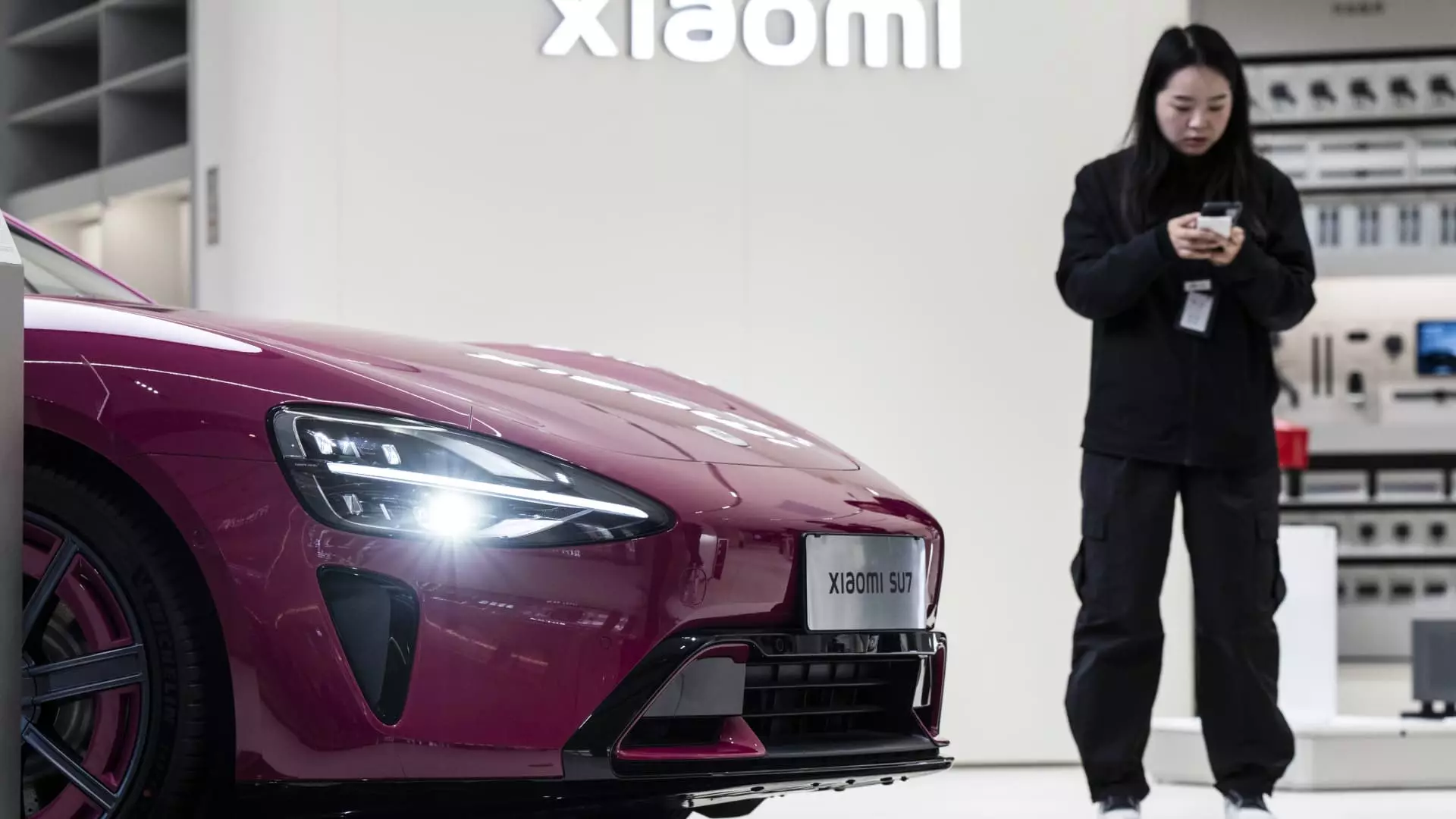The electric vehicle (EV) sector in China has become a battleground, showcasing both innovation and competition. Although traditional automotive giants once dominated the industry, a new wave of Chinese electric car manufacturers has emerged, dramatically reshaping the landscape. In March alone, three companies—Xiaomi, Xpeng, and Leapmotor—successfully delivered nearly 30,000 vehicles each. This shift is not merely a number; it signifies a seismic cultural and technological stride toward a more electric future. It’s fascinating to see how this dynamic industry is grappling with challenges while also making rapid advances.
Xiaomi’s impressive delivery figures, reaching over 29,000 units, speak volumes about its growing prowess. However, this surge has been tainted by tragedy. The recent crash of Xiaomi’s flagship model, the SU7, raises critical questions about the safety of autonomous technology. Although the company promptly announced its commitment to safety investigations, social media users remain skeptical. The balancing act between technological advancement and consumer safety is precariously thin.
Xpeng and Leapmotor Make Strides
Xpeng’s achievement in delivering 33,205 vehicles last month and Leapmotor’s record of 37,095 units reflect a robust evolution in their operational capabilities. These figures not only demonstrate a significant ramp-up but also highlight the companies’ capacity to entice consumers with innovative features. Xpeng’s reported 268% increase in year-on-year deliveries is no small feat and sets a high bar for competitors aiming for similar growth patterns.
Leapmotor, with a solid year-over-year growth of 154%, adds yet another layer to the complex narrative. It’s noteworthy that both companies have managed to outpace legacy automobile firms in just a few short years, signaling a shift in consumer sentiment toward newer players. This raises the question: Are traditional automakers truly prepared to adapt, or are they simply clinging to outdated models and practices?
BYD’s Dominance and Its Challenges
Despite the frenetic pace among startups, BYD stands tall as the undisputed market leader, having sold an astonishing 371,419 vehicles in March alone. The company’s remarkable 57.9% year-over-year growth demonstrates that it can maintain its top position while innovation thrives around it. BYD’s focus on integrating cutting-edge technologies like its Super e-Platform and advanced driver-assistance systems shows an understanding of not just consumer desires but also the necessity of remaining competitive.
Nonetheless, the landscape is not without its concerns. While BYD has the market share, its challenge lies in ensuring consistent innovation to fend off competition. In a sector that grows rapidly, complacency can prove detrimental. The pressure is on for BYD to keep its momentum while other players relentlessly strive to capture market share.
Challenges for Tesla and Rivals
Even Tesla, a pioneering figure in the electric vehicle market, is facing hurdles. Their sales in China saw an 11.5% year-over-year decline in March, contrasting sharply with the soaring numbers from local Chinese competitors. This situation is alarming for a brand that once seemed invincible. The question remains: how will Tesla respond to these shifting dynamics? The competition appears to be closing the gap, and for the first time, Tesla is not guaranteed a runaway success.
Nio and Li Auto also illustrate the challenges of sustaining growth amid intense competition. Despite reporting gains, their numbers often fall short of expectations, raising questions about their long-term viability. Nio’s effort to market itself as family-oriented is commendable, yet it underscores the difficulties in striking a balance between niche marketing and broad appeal.
Market Adaptation and Consumer Demand
The electric vehicle landscape is not just about numbers; it’s about understanding consumer psychology. Many emerging brands are successfully tapping into the modern consumer’s desire for not just vehicles but technology and sustainability. As seen through Leapmotor’s launch and Xpeng’s continual innovation, there’s a forward-thinking mindset blossoming in Chinese automotive culture.
On the flip side, we must recognize the reality: not all companies are succeeding at the same pace. While some brands are soaring, others are struggling to break the 20,000-unit threshold. As the EV sector matures, the market will likely tidy itself up—forcing many players to either adapt or risk obsolescence. The challenge for all these manufacturers will be to evolve in an environment that is changing more rapidly than ever before.
Ultimately, the takeaways from March’s deliveries demonstrate both the triumphs and tribulations within the electric vehicle landscape—an arena where growth is met with the ever-present specter of competition, technology, and consumer expectations. The Chinese electric vehicle market is a vivid illustration of the complexities that come with innovation and advancement in an industry that is rewriting the rules of traditional automotive lore.

